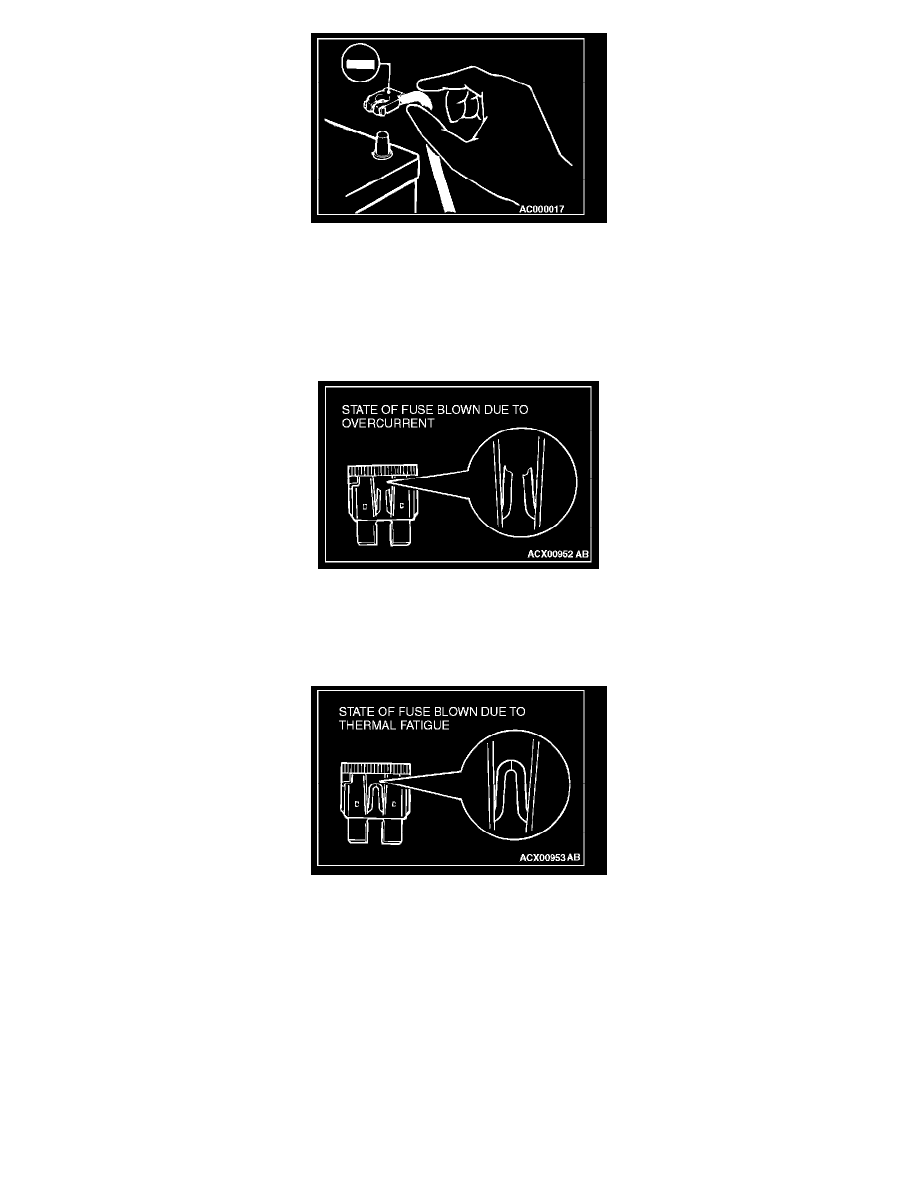Sebring Coupe V6-3.0L VIN H (2005)

WARNING: Battery posts, terminals and related accessories contain lead and lead compounds. WASH HANDS AFTER HANDLING
When checking or servicing does not require power from the vehicle battery, be sure to disconnect the cable from the battery (-) terminal. This will
prevent problems that could be caused by a short circuit. Disconnect the (-) battery terminal first and reconnect it last.
Cautions In Event of Blown Fuse
When a fuse is blown, there are two probable causes. One is that it is blown due to flow of current exceeding its rating. The other is that it is blown due
to repeated on/off current flowing through it. Which of the two causes is responsible can be easily determined by visual check as described below.
1. Fuse blown due to current exceeding rating
The illustration shows the state of a fuse blown due to this cause. In this case, do not replace the fuse with a new one hastily since a current heavy
enough to blow the fuse has flowed through it. First, check the circuit for shorts and check for abnormal electric parts. After correcting shorts or
replacing parts, use only a fuse of the same capacity as a replacement. Never use a fuse of larger capacity than the original fuse. If a larger capacity
fuse is used, electric parts or wiring could be damaged, or could start a fire.
2. Fuse blown due to repeated turning current on and off The illustration shows the state of a fuse blown due to repeated current on/off. Normally,
this type of problem occurs after a fairly long period of use and is less frequent than above. In this case, simply replace with a new fuse of the same
capacity.
Checking Fuses
